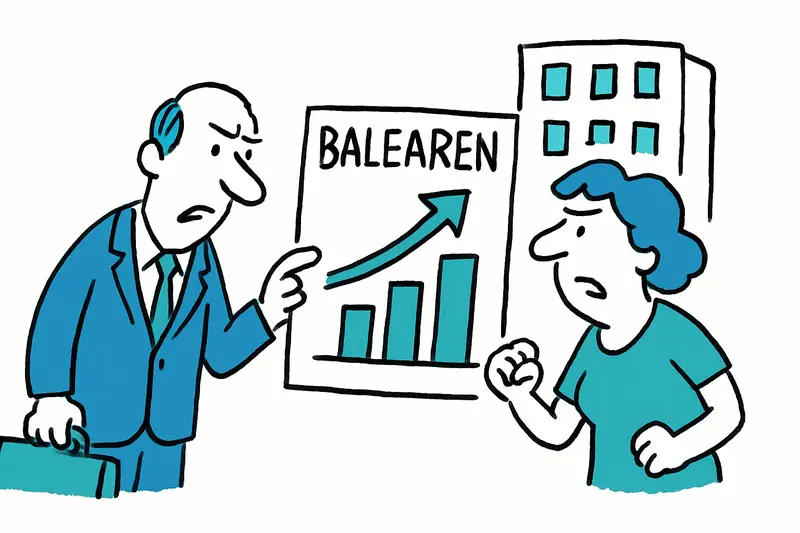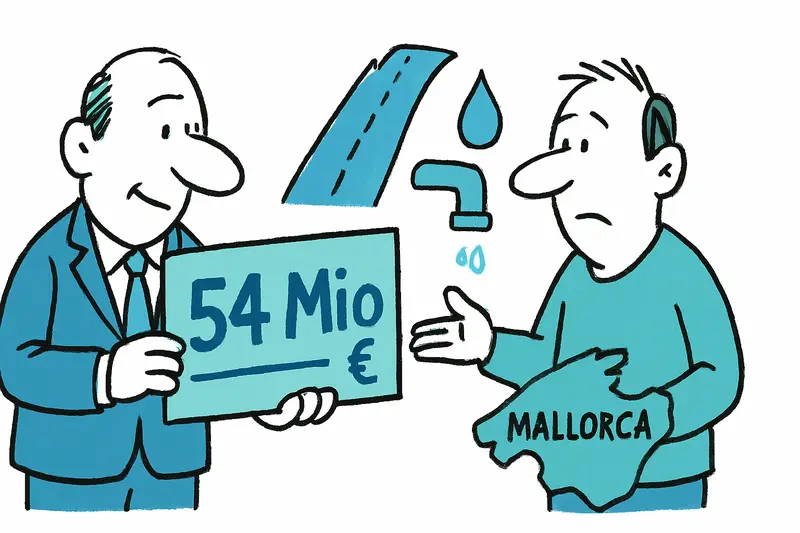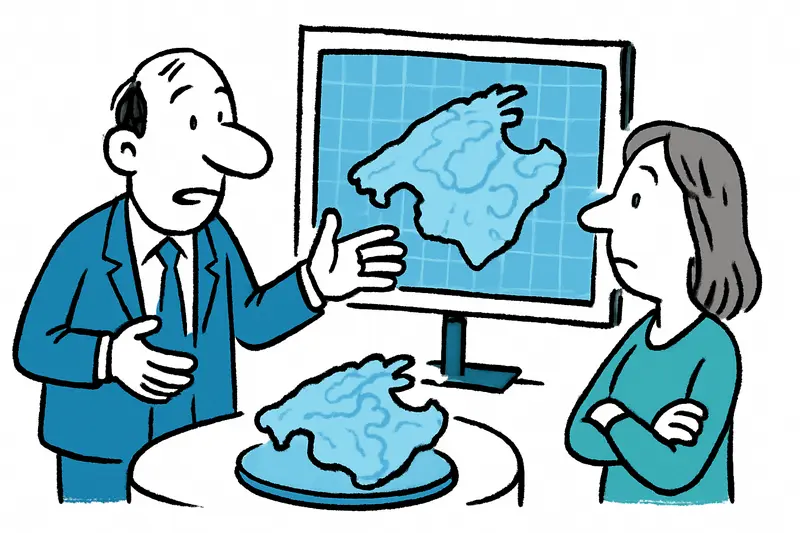The Balearic government plans to build a digital mirror of the islands: real-time simulations are intended to make planning for transport, water and emergencies easier — with attention to data protection and local participation.
A digital replica of the islands: What is planned
At Parc Bit, on a windy morning, the regional government announced a project that quickly became the talk of the town here: a digital twin of the Balearic Islands. The goal: a virtual model that can represent everyday life and exceptional situations in real time — from water levels to tourist flows, from energy supply to waste logistics.
In short: The idea is to make developments more predictable. Not with crystal balls, but with data, simulations and a lot of technology that will be set up in the coming months.
What this could mean for the islands
Imagine traffic planners testing new bus lines first on a computer. Or the water authority testing how a drought scenario would affect supply networks. Such possibilities are on the table. Authorities hope to make decisions more informed — and faster.
The project has a budget of around €4.6 million. The announcement was made in connection with an AI forum at Parc Bit, where representatives from government, start-ups and research met. The plan is to start small: first Mallorca, then successively Menorca, Ibiza and Formentera.
Jobs, companies and the local twist
For the tech firms at Parc Bit this is a welcome contract. Smaller companies are to be strengthened through additional innovation support: the government is increasing these funds by a further €8 million — according to insiders, to kick-start more projects and involve local providers.
I spoke on the sidelines with a developer from one of the offices — okay, half-listening during a coffee break in the car park — but you can tell: the mood is curious, a bit excited. New jobs are possible, especially in data analysis, modeling and system operations.
Data protection, transparency and concerns
Of course there are questions: Who gets access to the data? How will sensitive information be protected? Associations and citizen representatives are already demanding clear rules, open processes and assurances that the models will not be used for covert surveillance.
Officials say the system should operate transparently and only be run with aggregated, anonymized data. Critics call for binding oversight mechanisms and a public data strategy.
Timeline and outlook
The first development phase is scheduled for the coming year — prototypes, tests with traffic data and simulations for water use. If all goes well, first applications could become visible within 12 to 18 months.
In the end, a practical thought remains: a digital twin can help make tricky decisions — but it does not replace local insight, conversations with residents or the experience of people who live on the islands every day. Hopefully that will be a central focus: using technology without excluding people.
Read, researched, and newly interpreted for you: Source
Similar News

Fewer Flights, More Seats: Palma Airport Sees Mixed Results in December
In December fewer takeoffs and landings are scheduled at Palma Airport — yet seat capacity grows. Why this is happening ...

Investors Take Over H&M and BBVA Premises on the Upper Passeig del Born
A group of investors has purchased the commercial spaces at the upper end of Passeig del Born. The shops remain open for...

Balearic Islands: Square meter prices rise sharply – second-highest level in Spain
In the third quarter, prices for available apartments climbed significantly. The islands are now around 70% above the Sp...

€54 Million for Mallorca's Municipalities: Plan for Infrastructure, Water and Energy
For 2026/27 the island council is allocating €54 million: mainly for roads, drinking water projects and a small energy p...

Palma's small boutiques want to close earlier in winter
A group of small boutiques in Palma proposes to close at 7:00 p.m. during winter. Goal: save costs and ease staff worklo...
More to explore
Discover more interesting content

Experience Mallorca's Best Beaches and Coves with SUP and Snorkeling

Spanish Cooking Workshop in Mallorca

